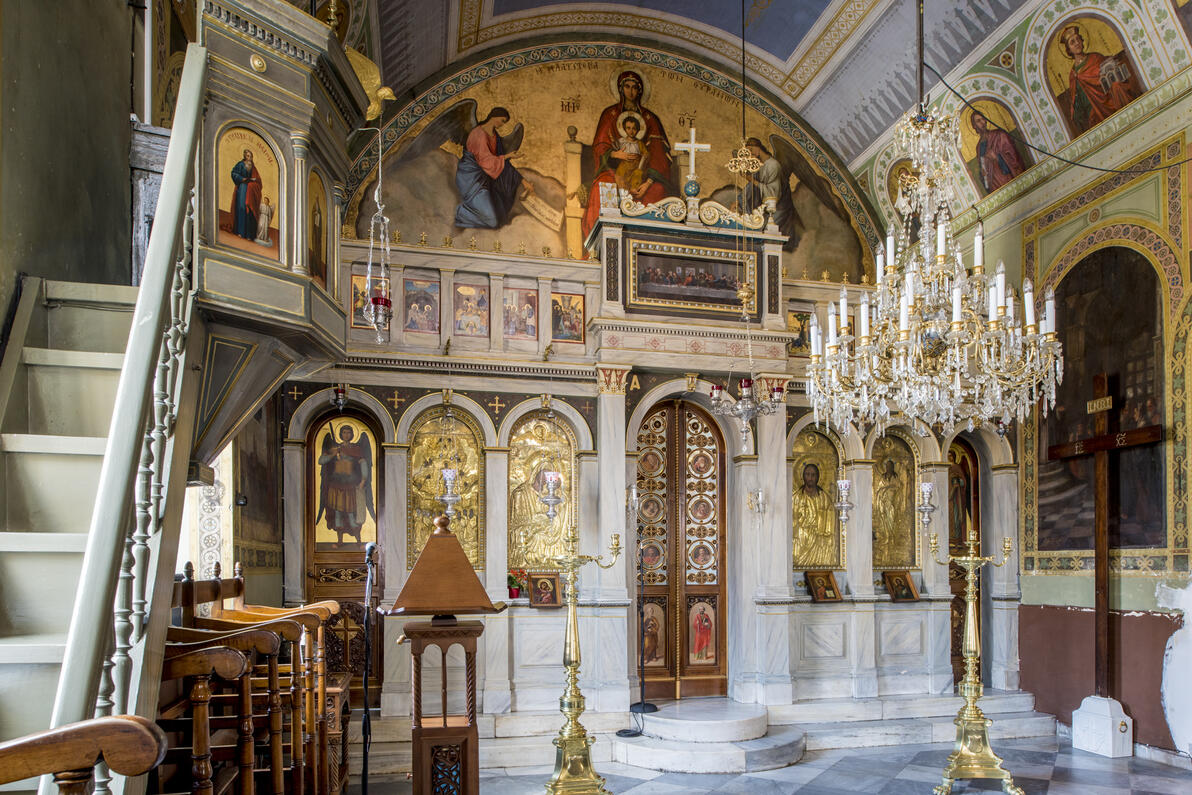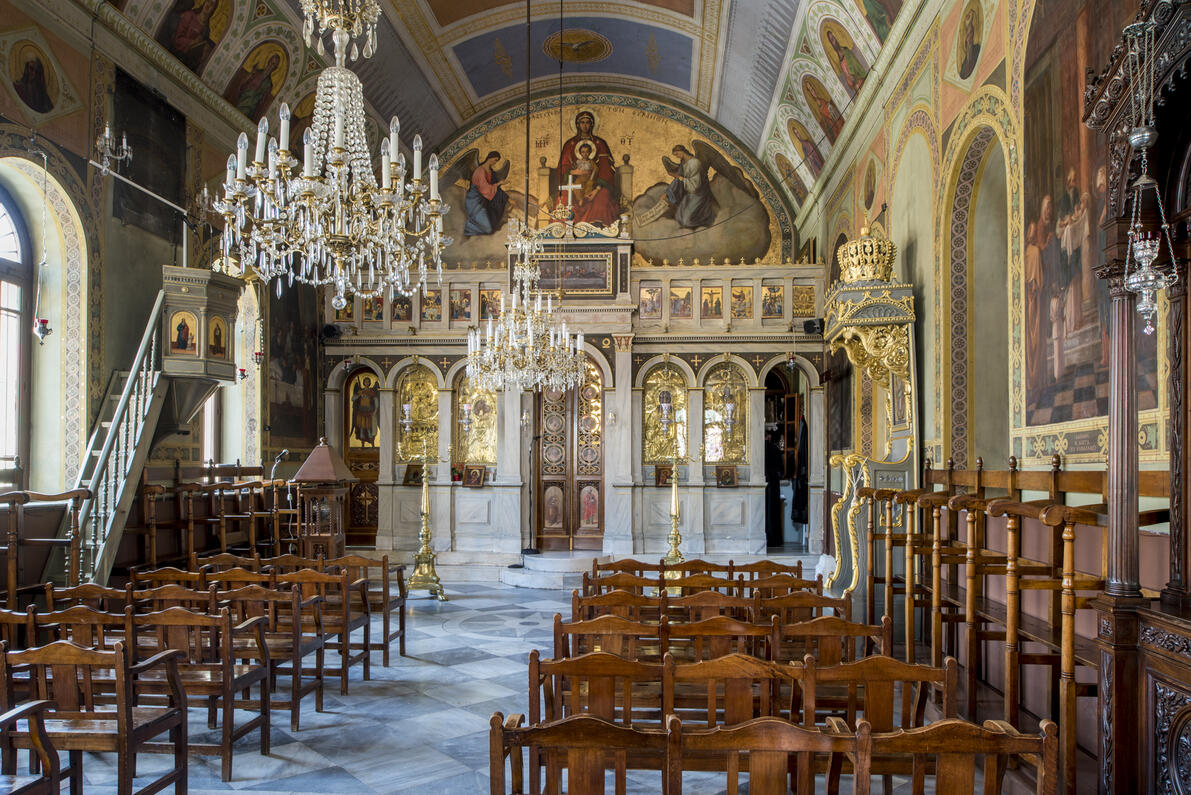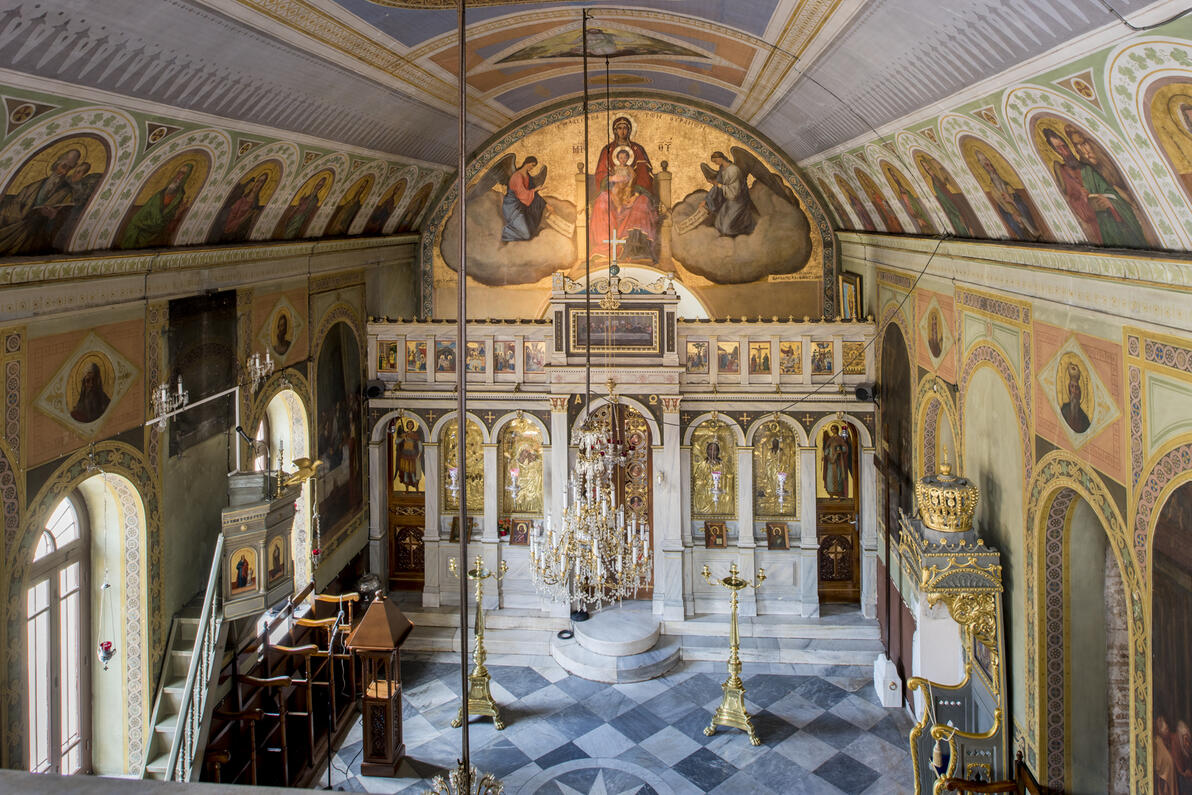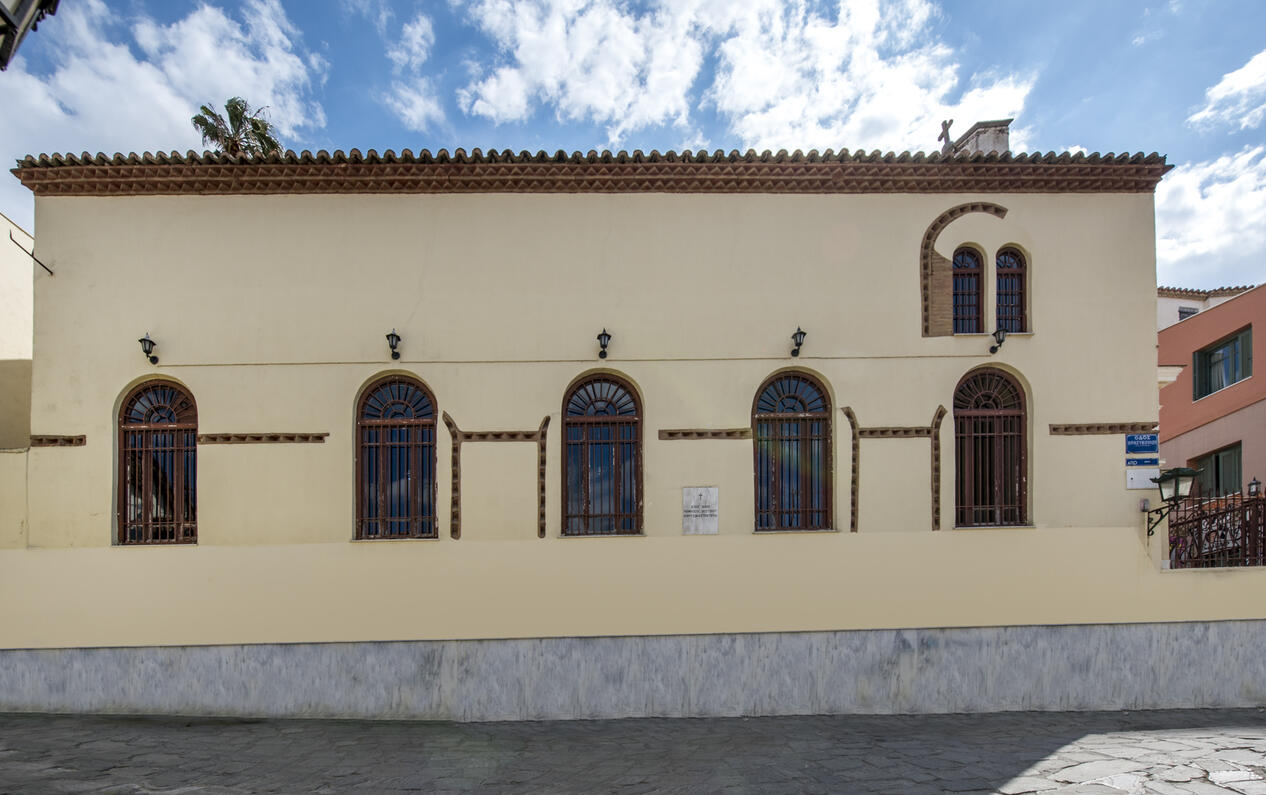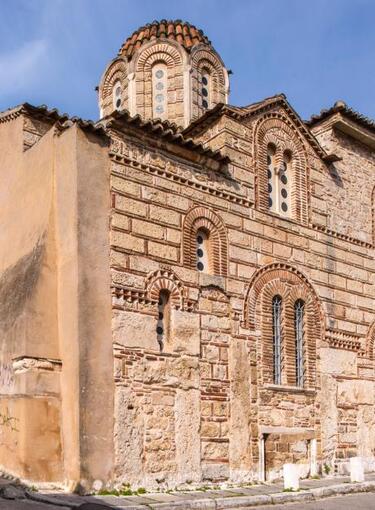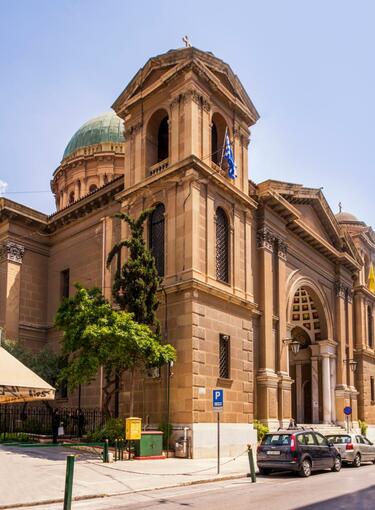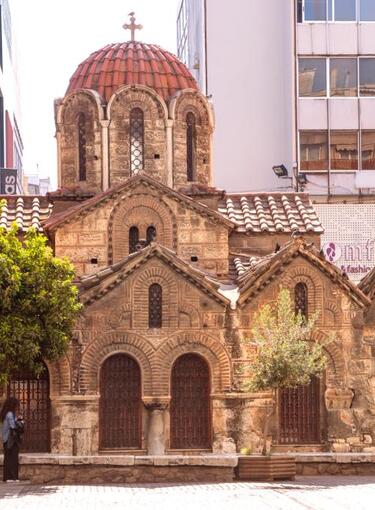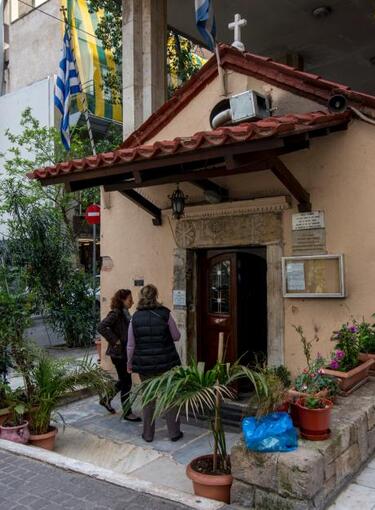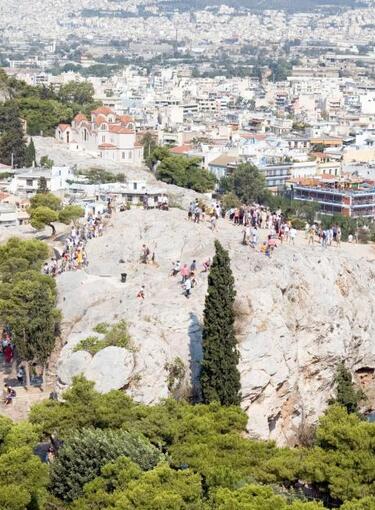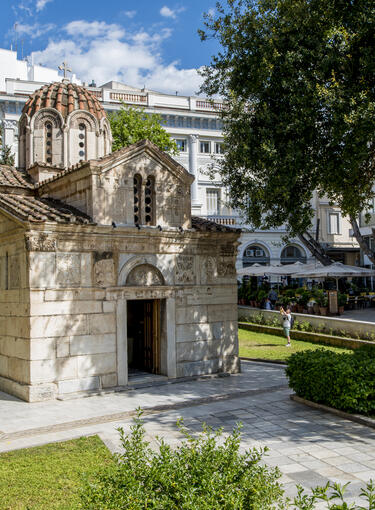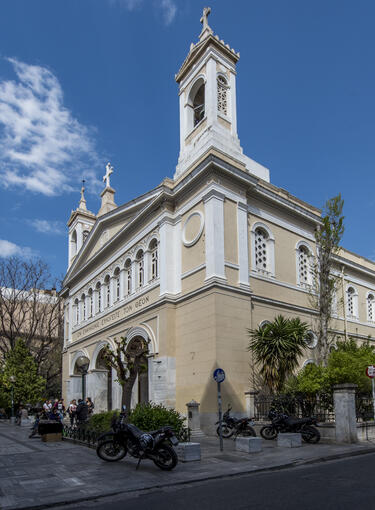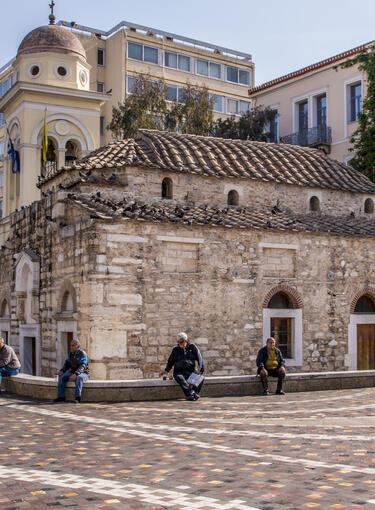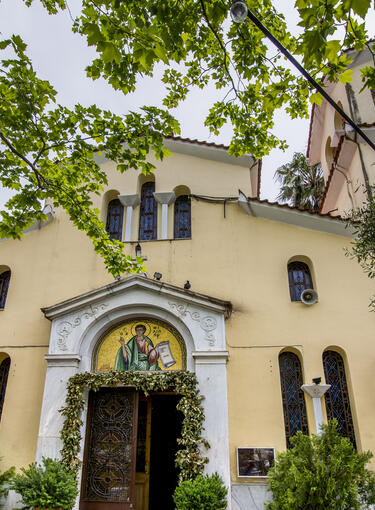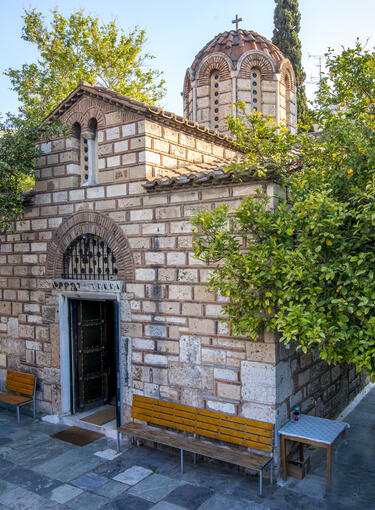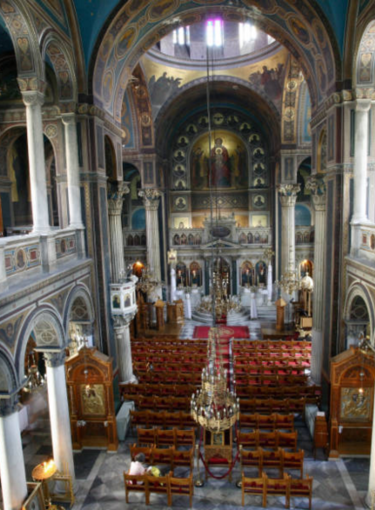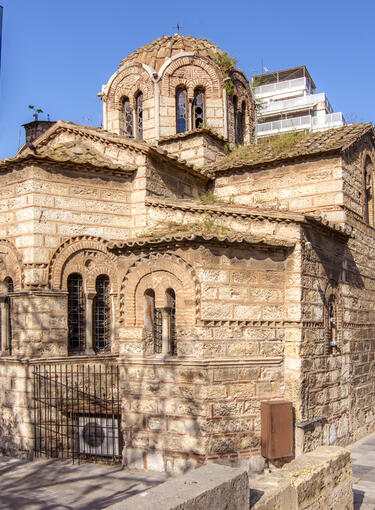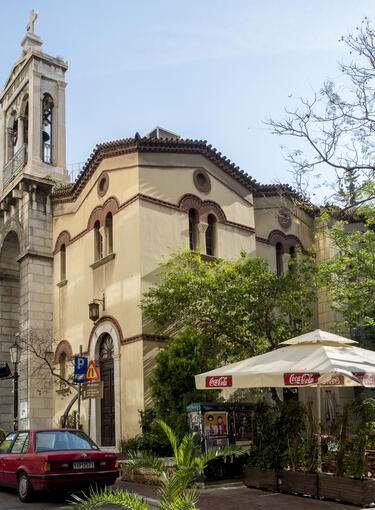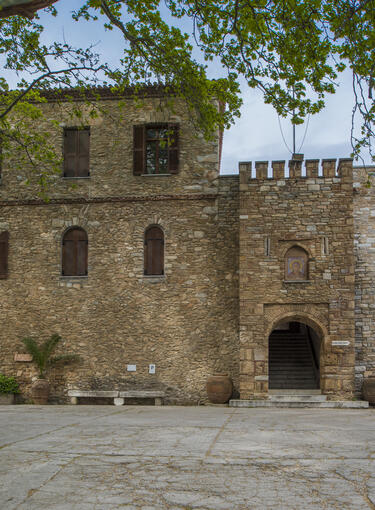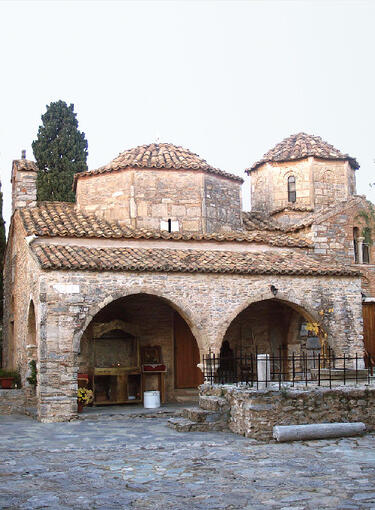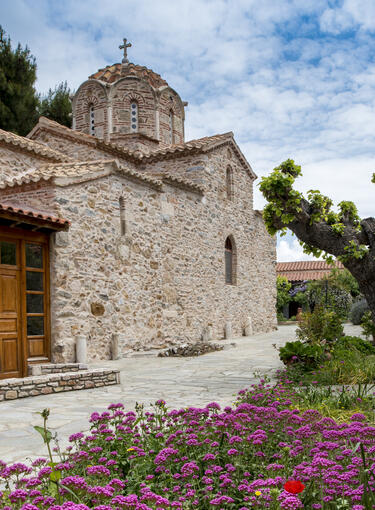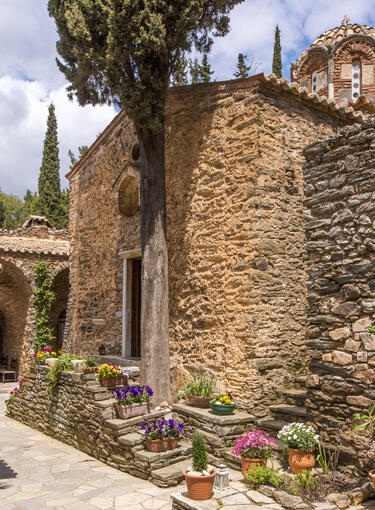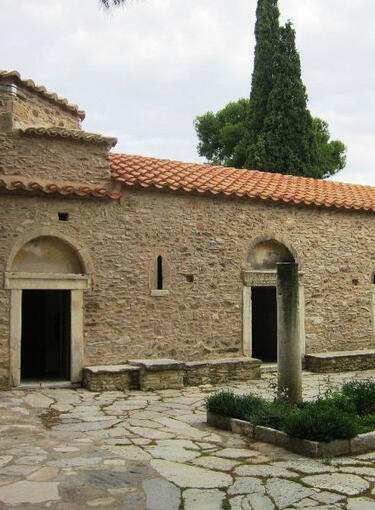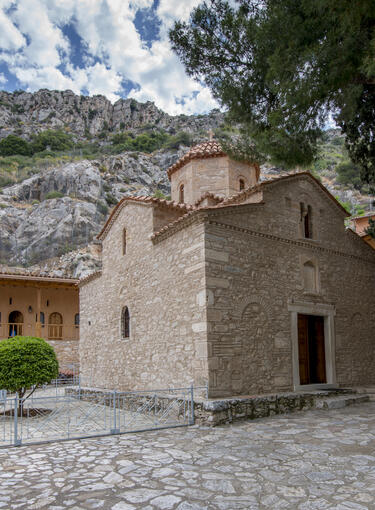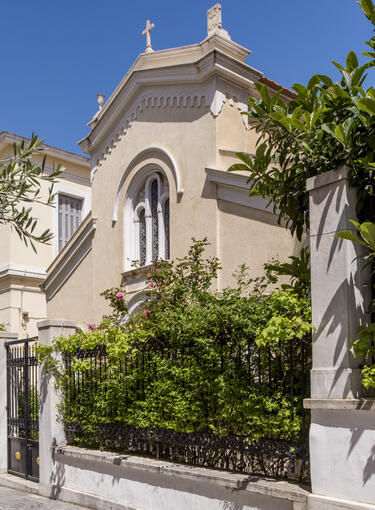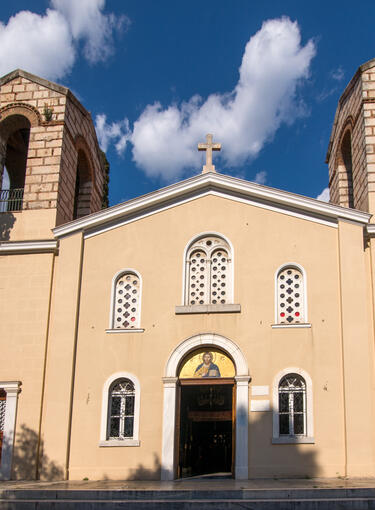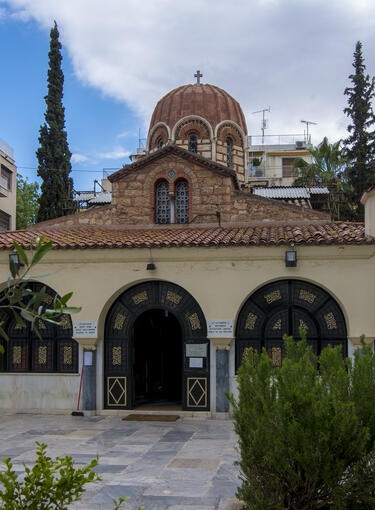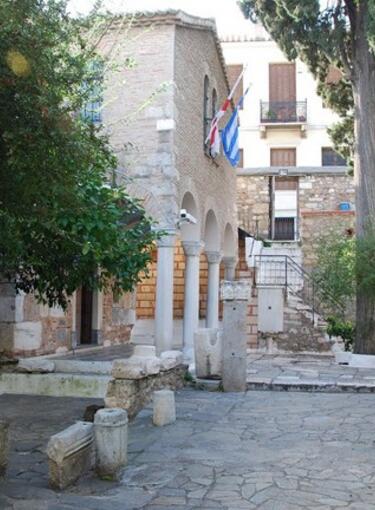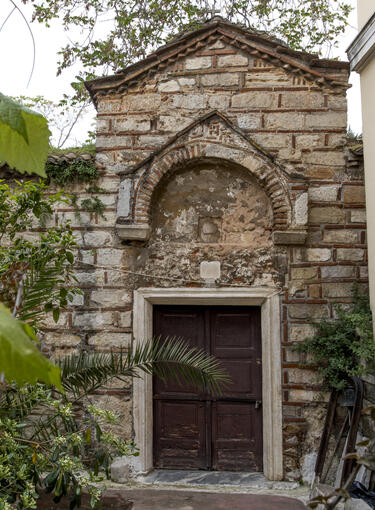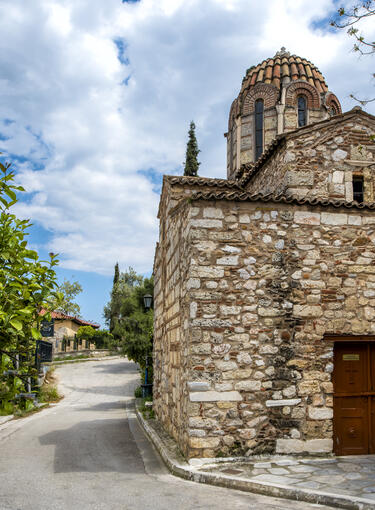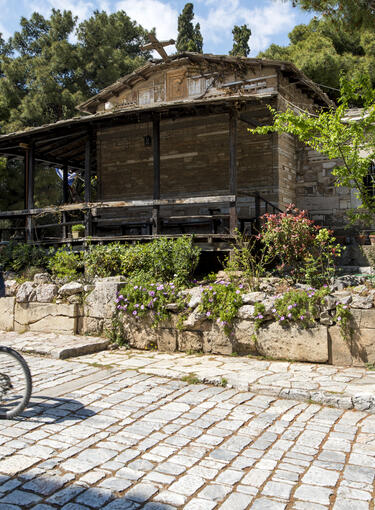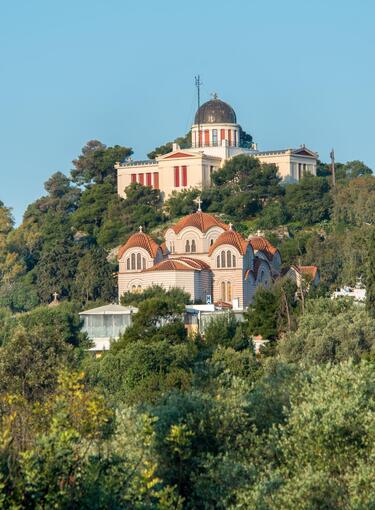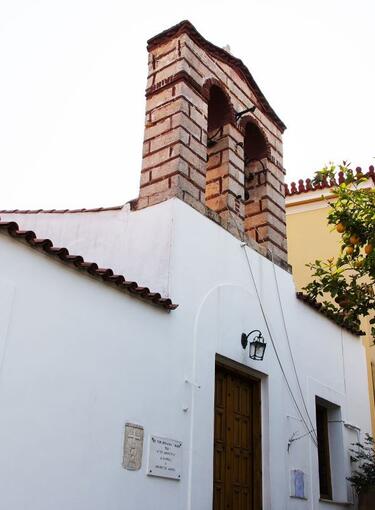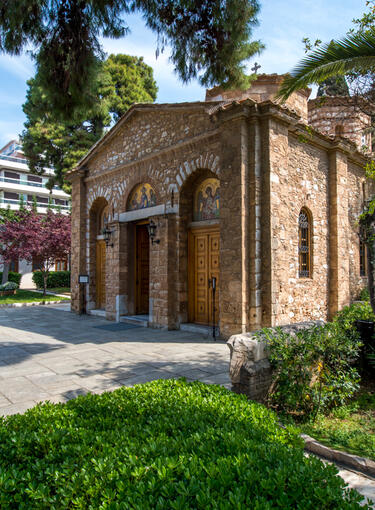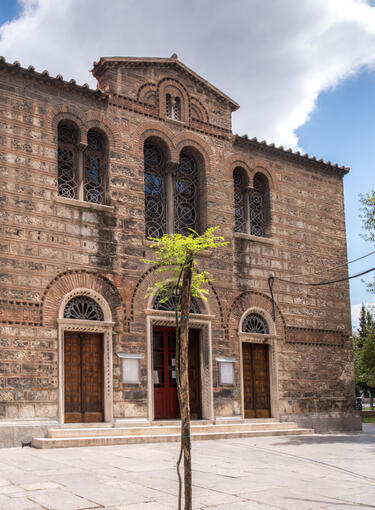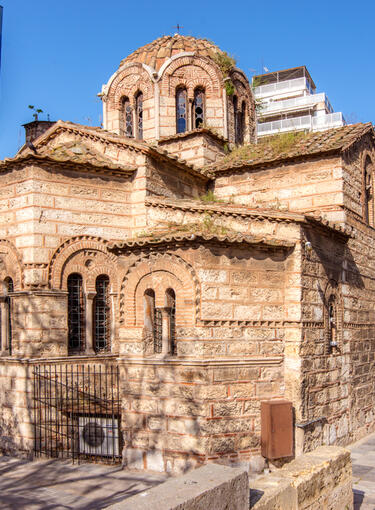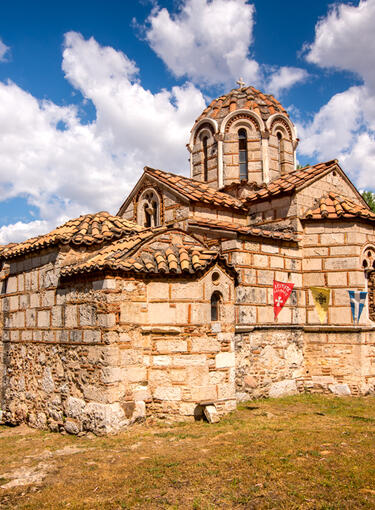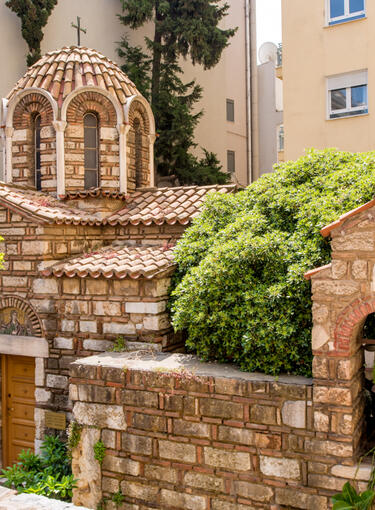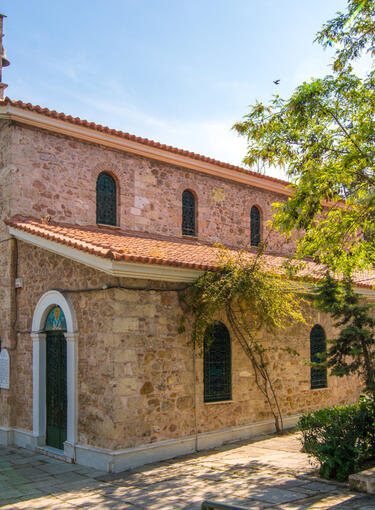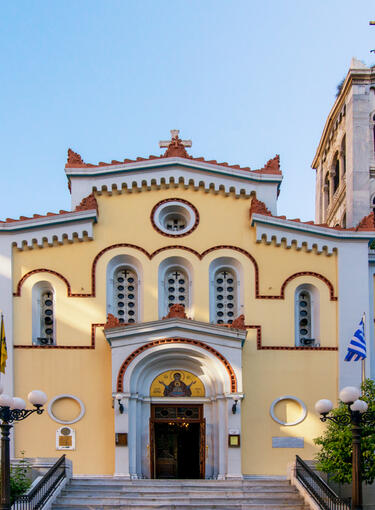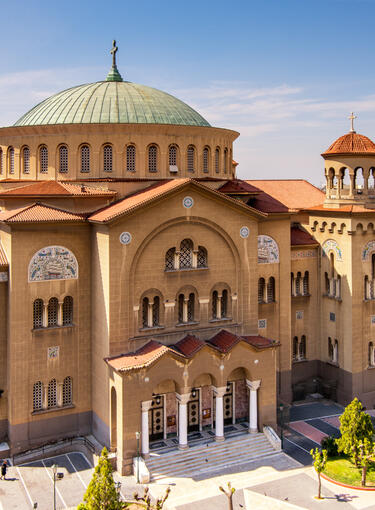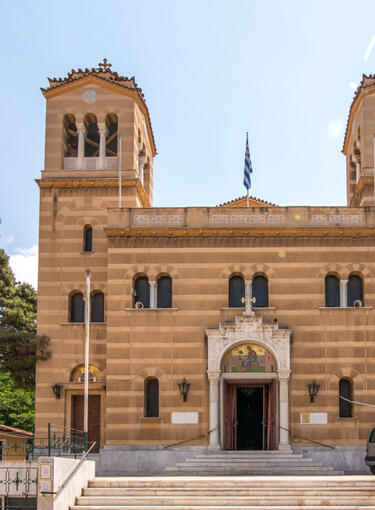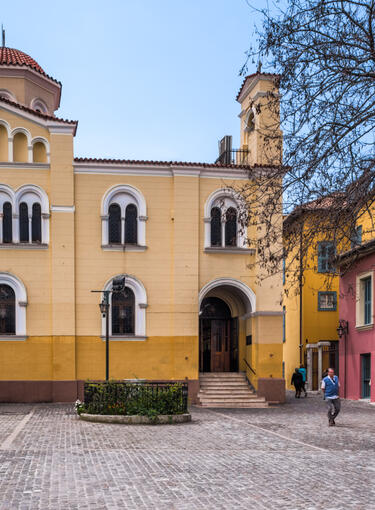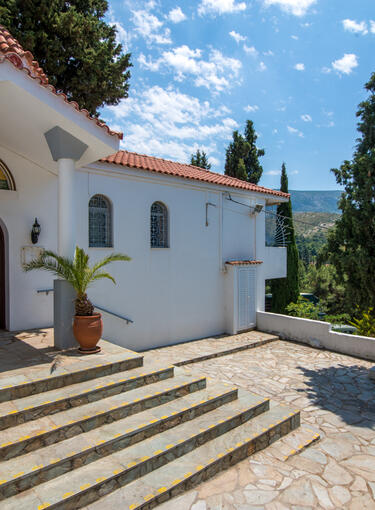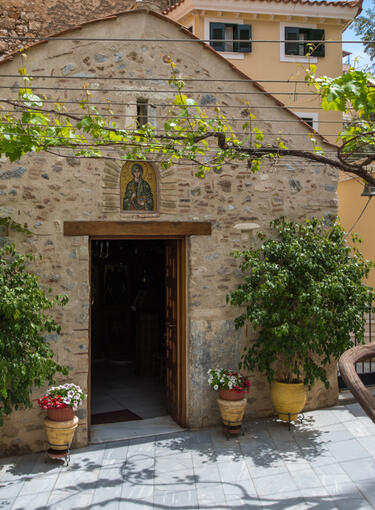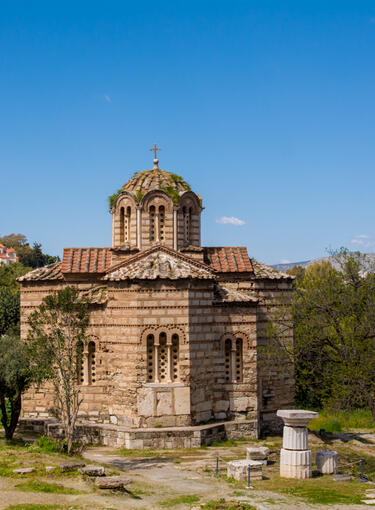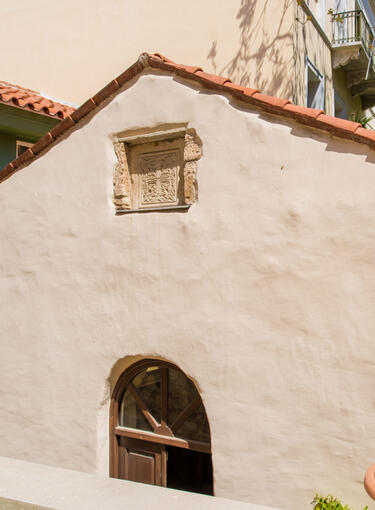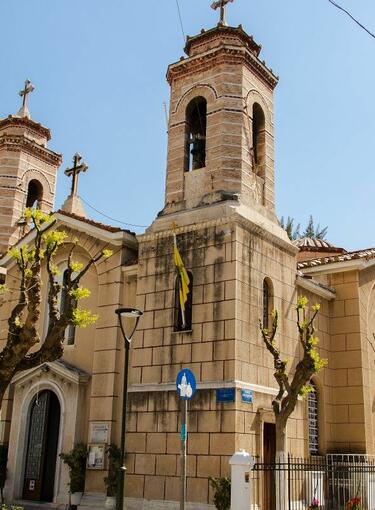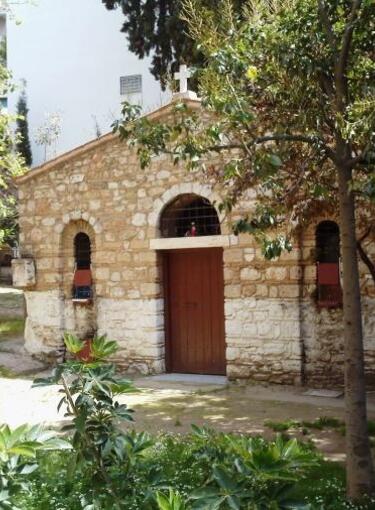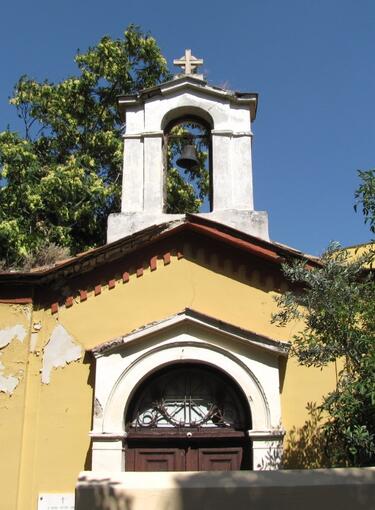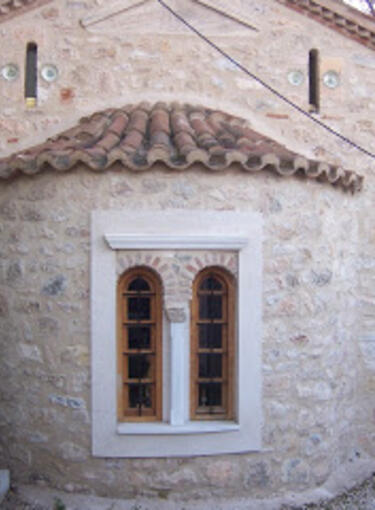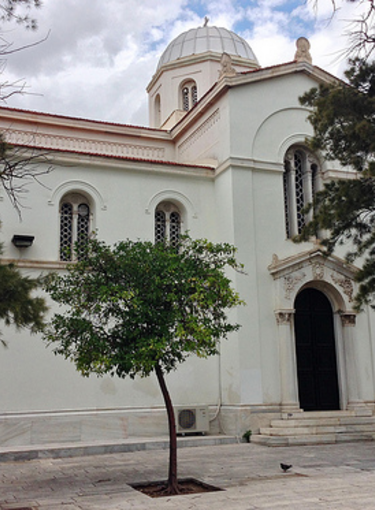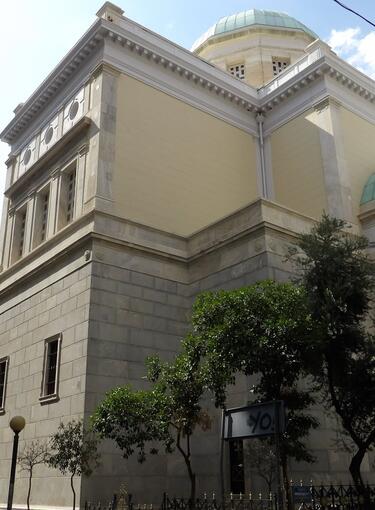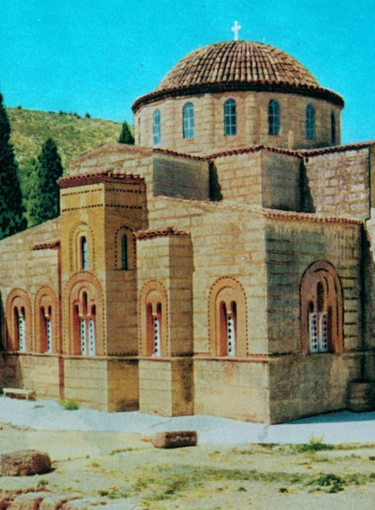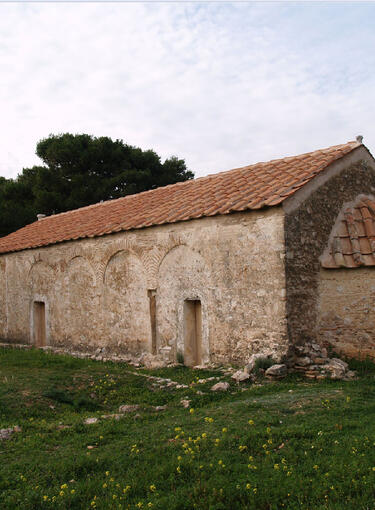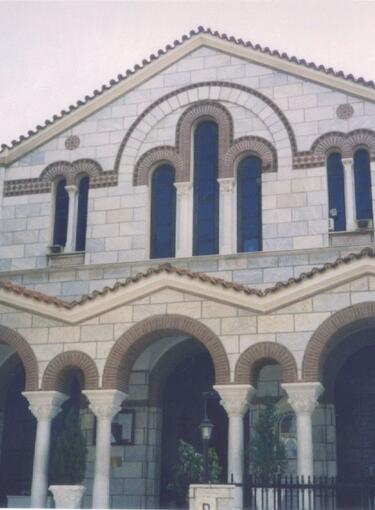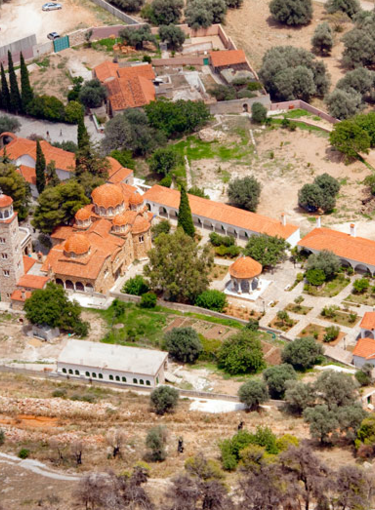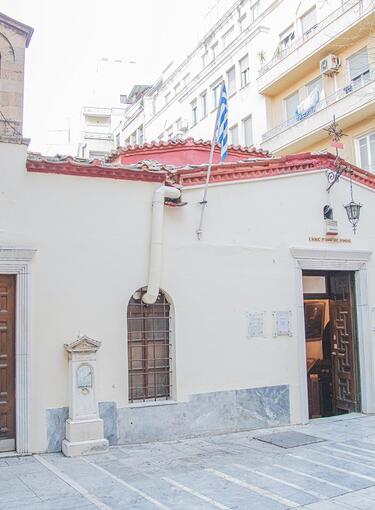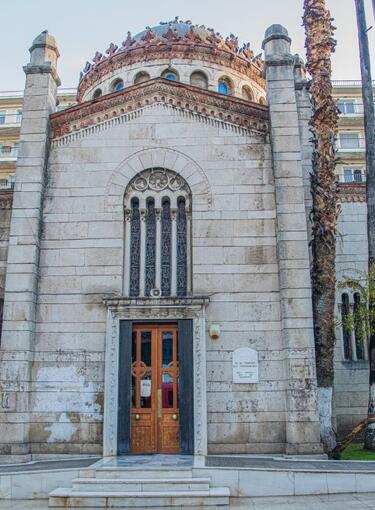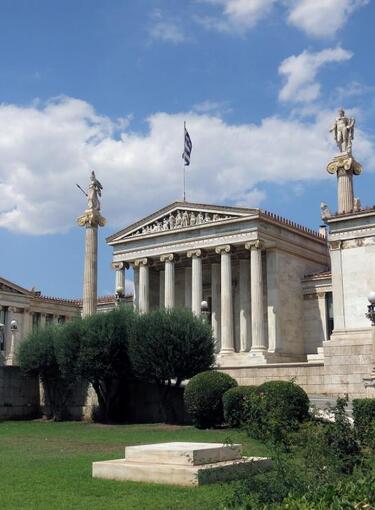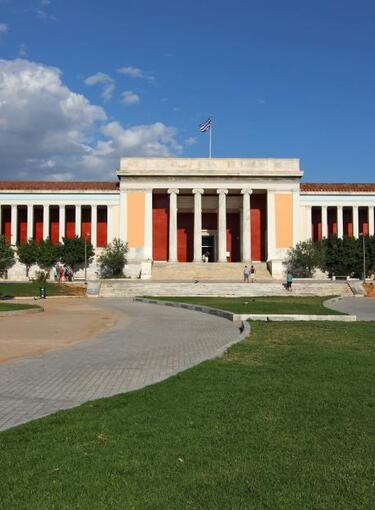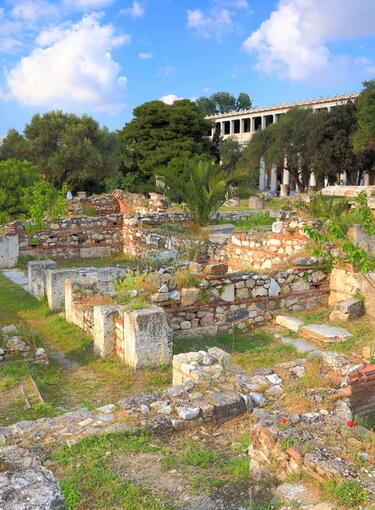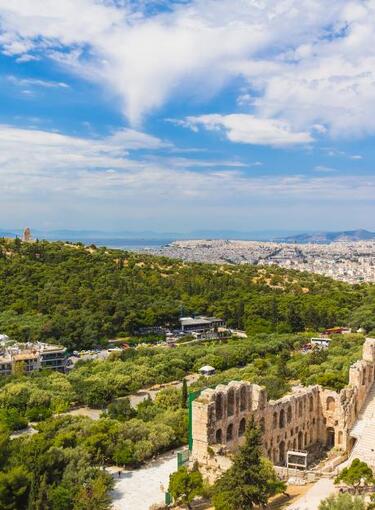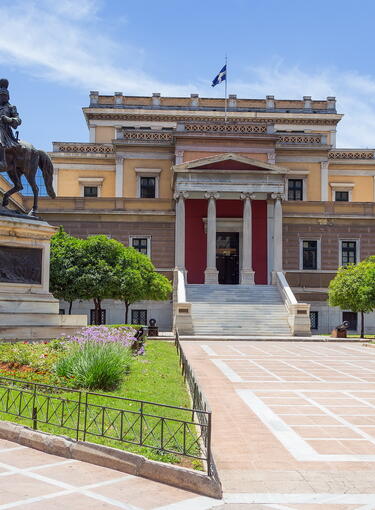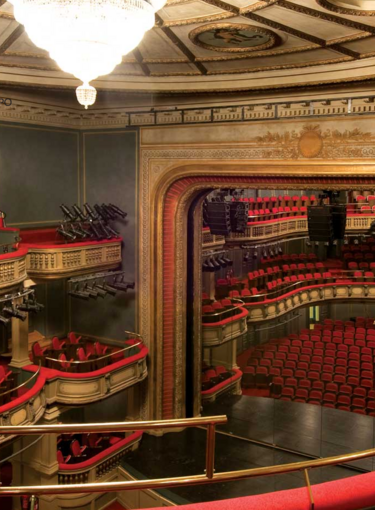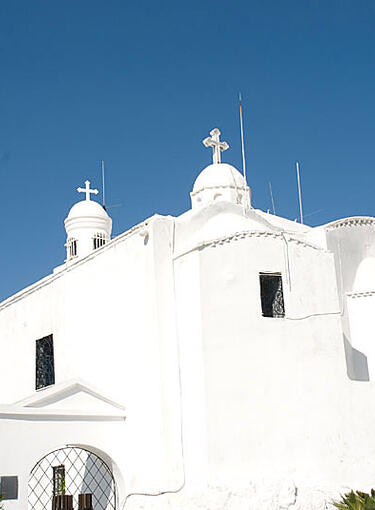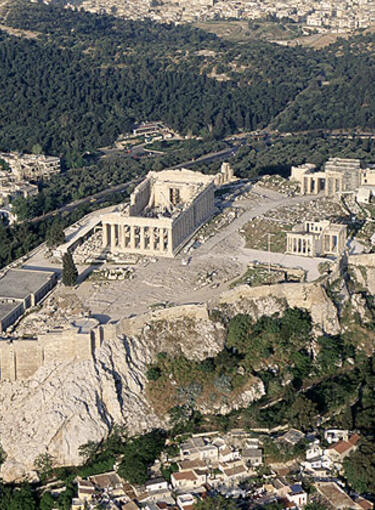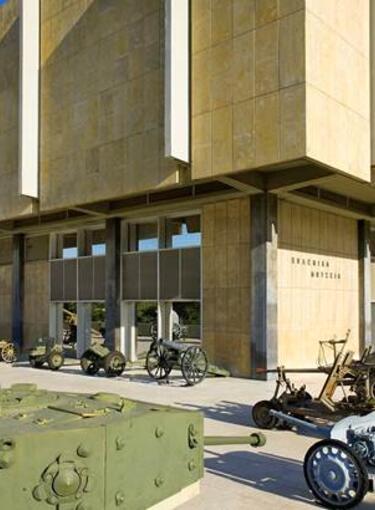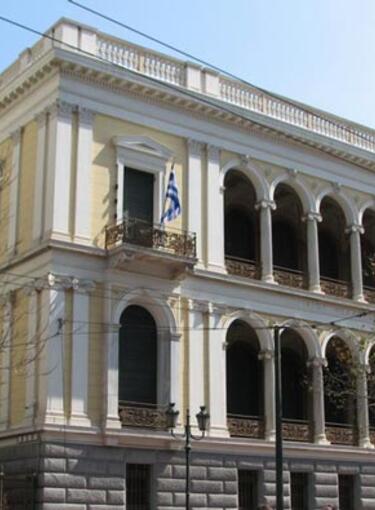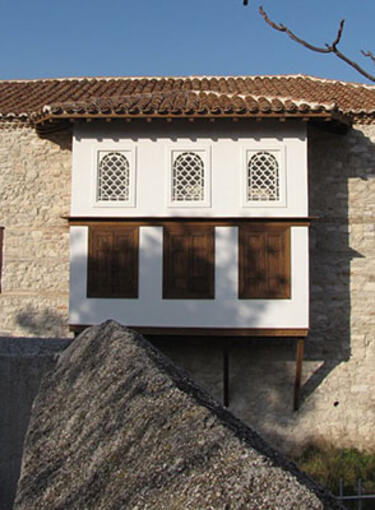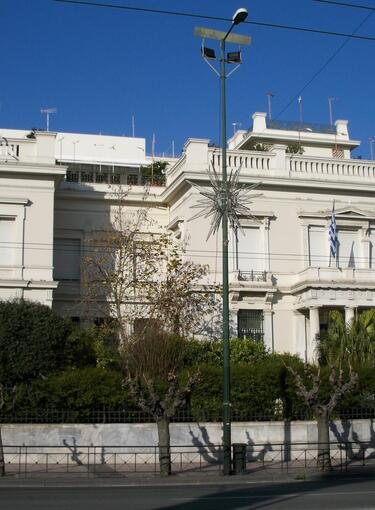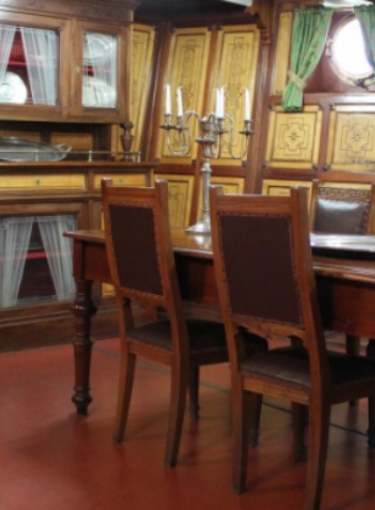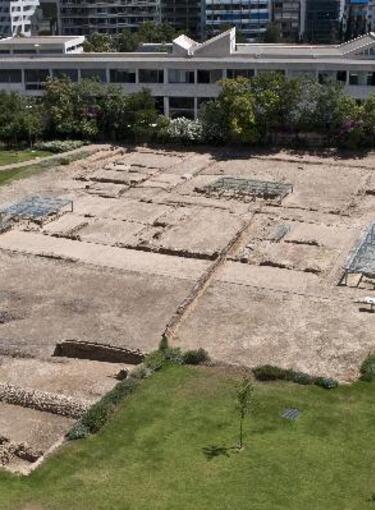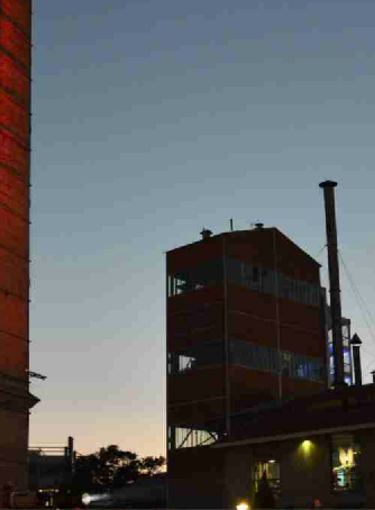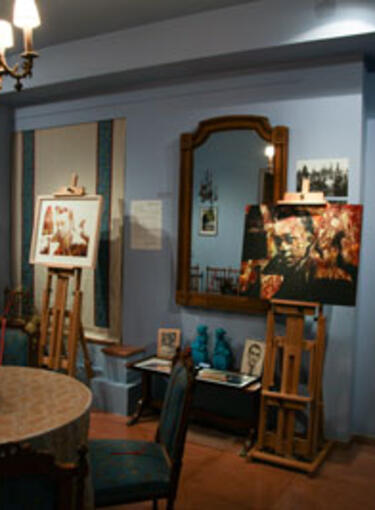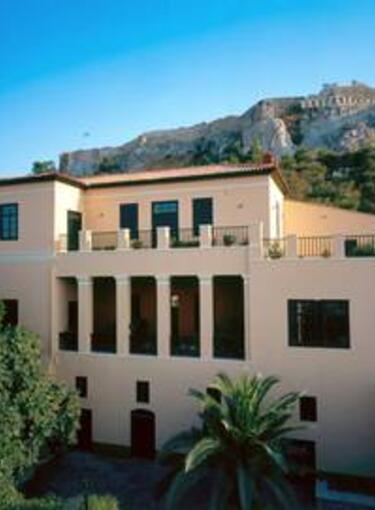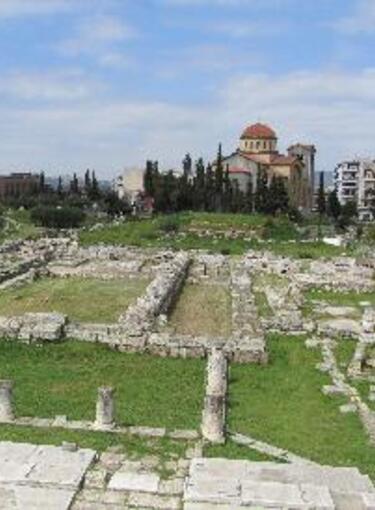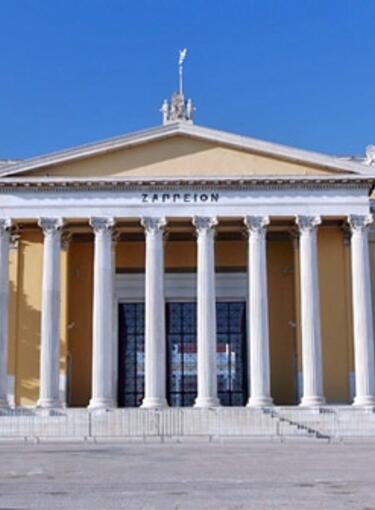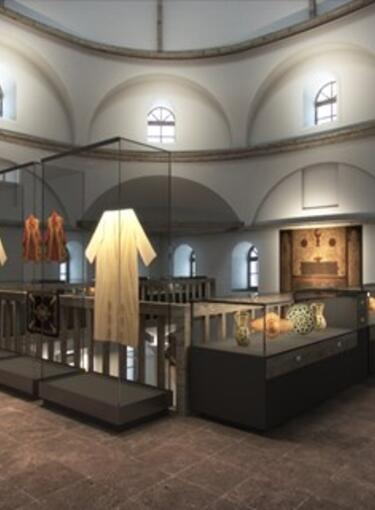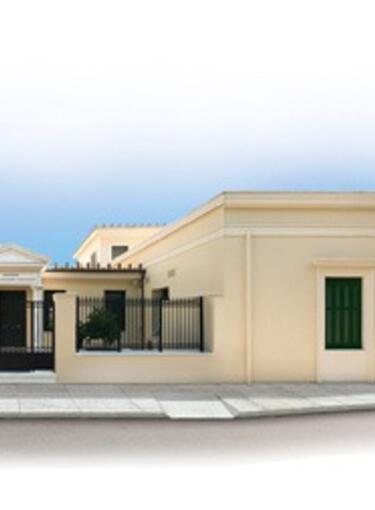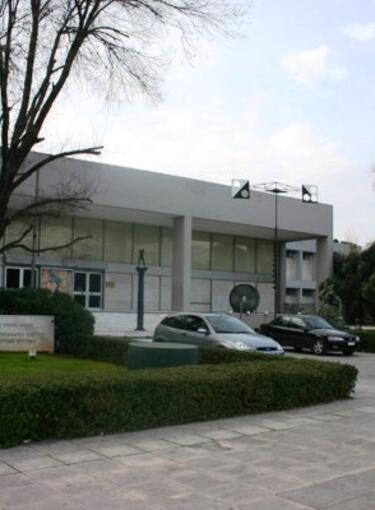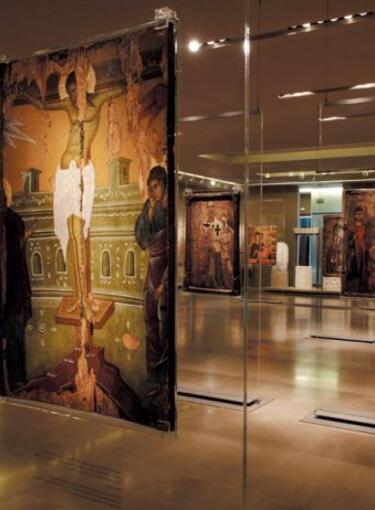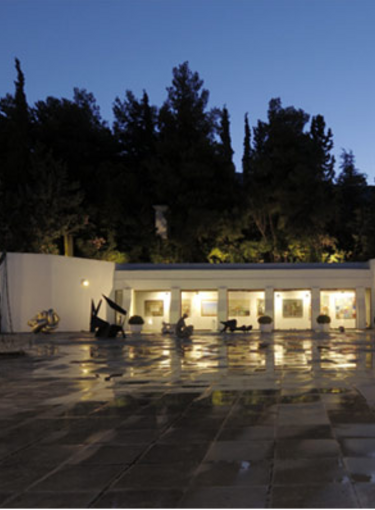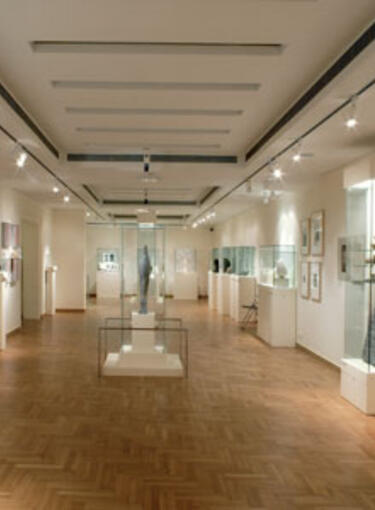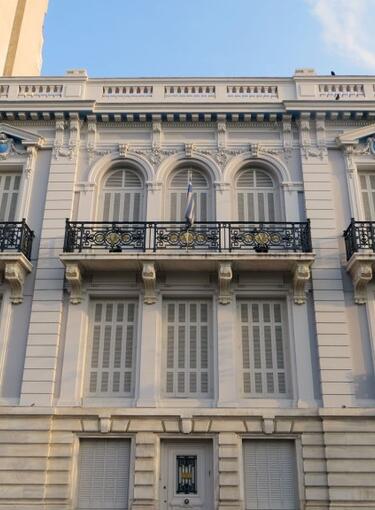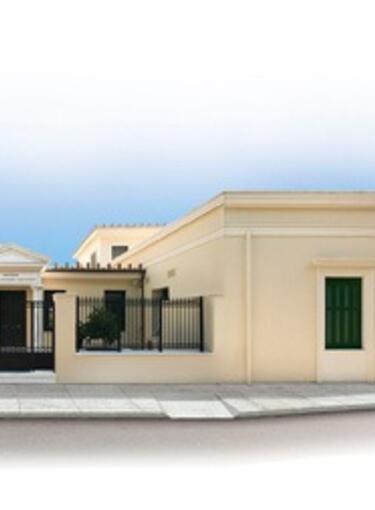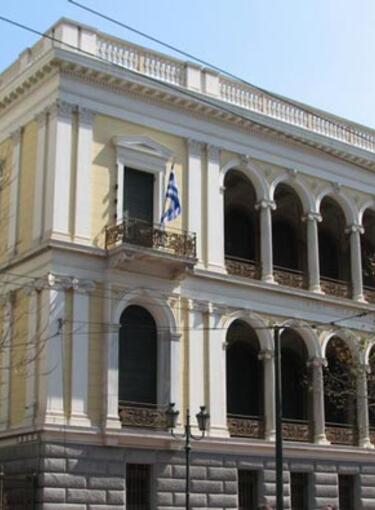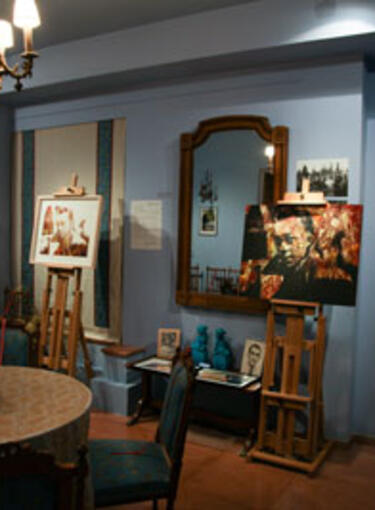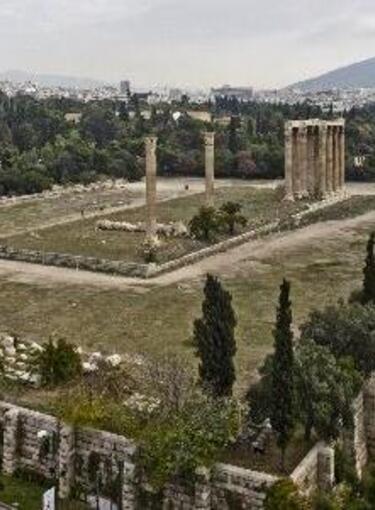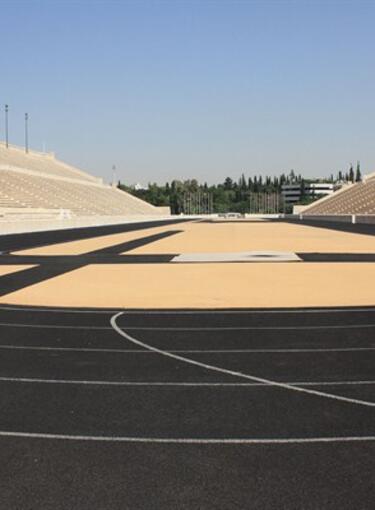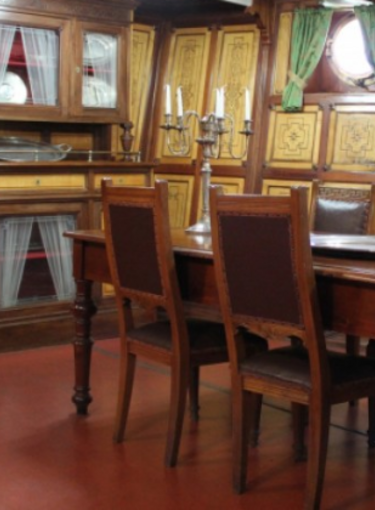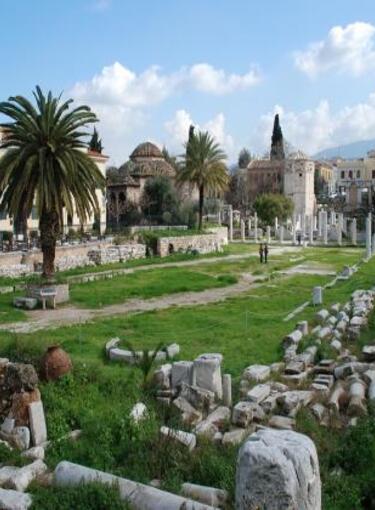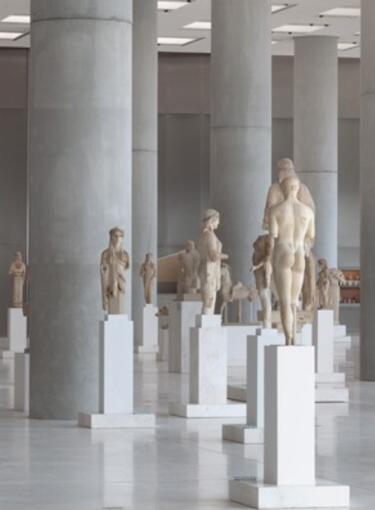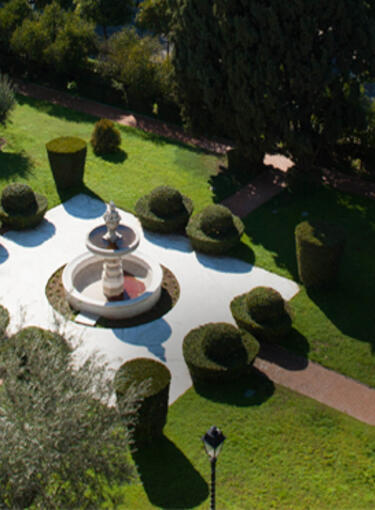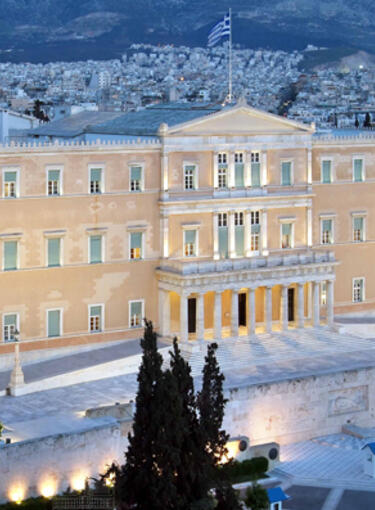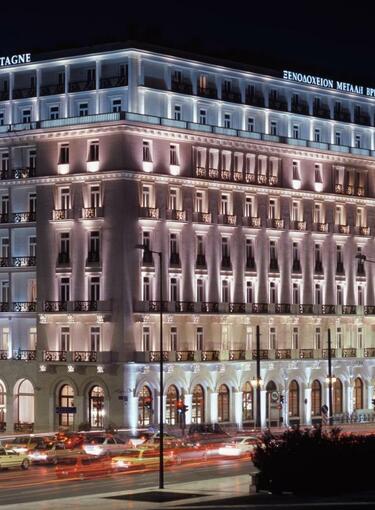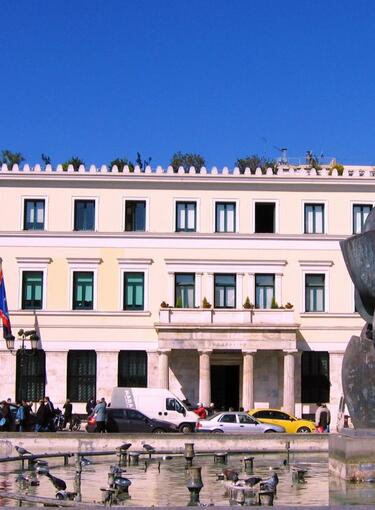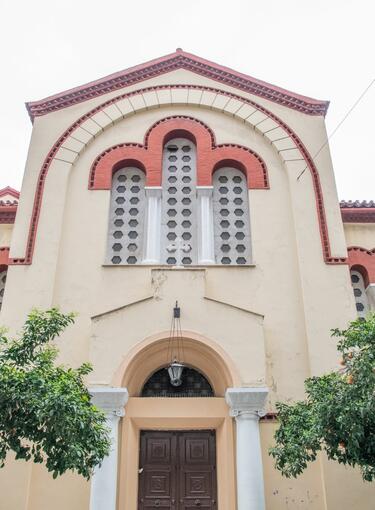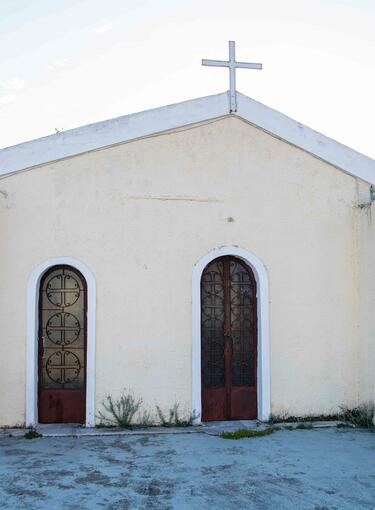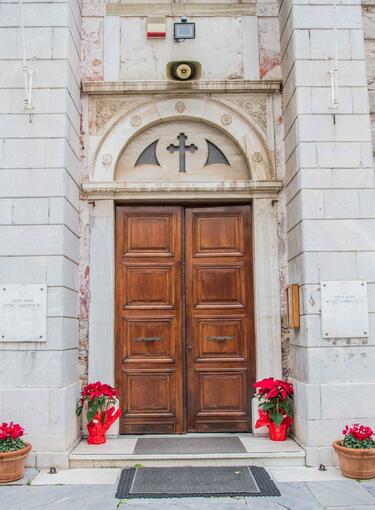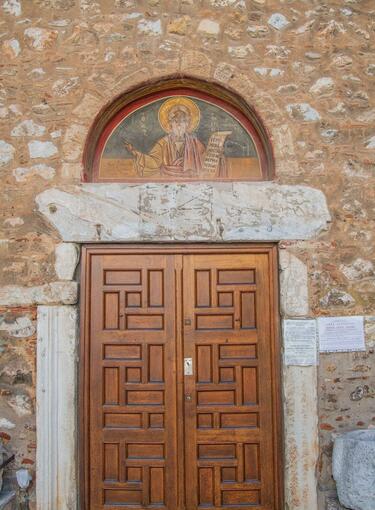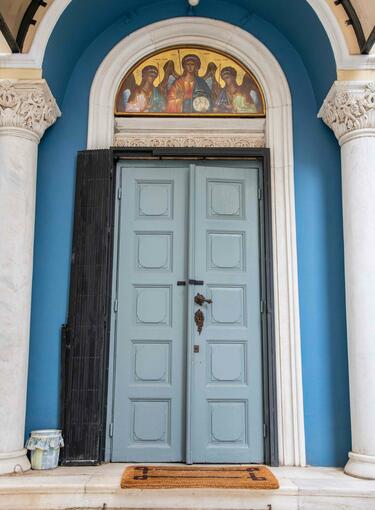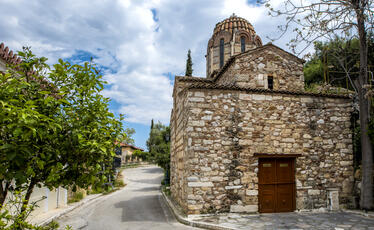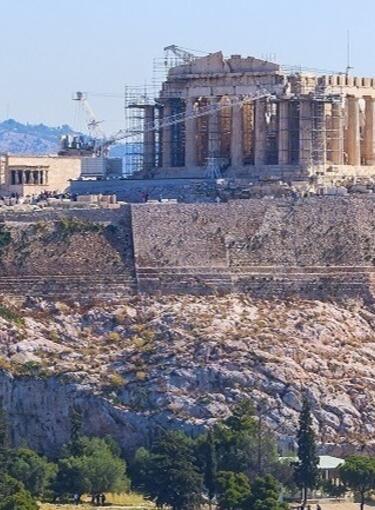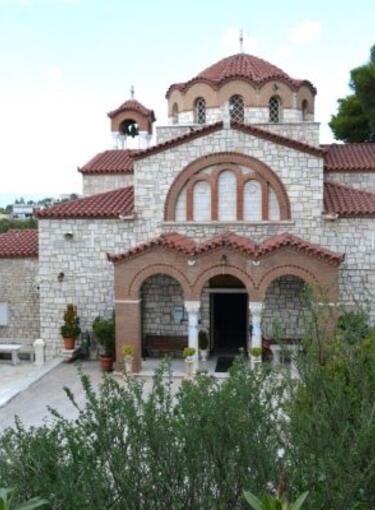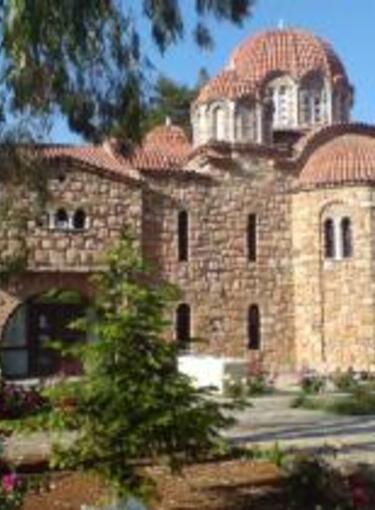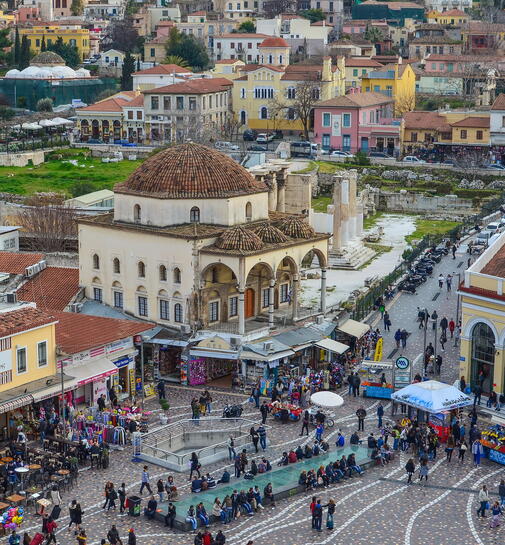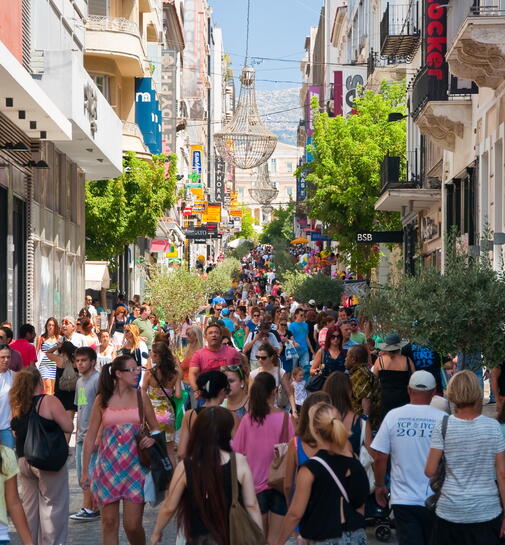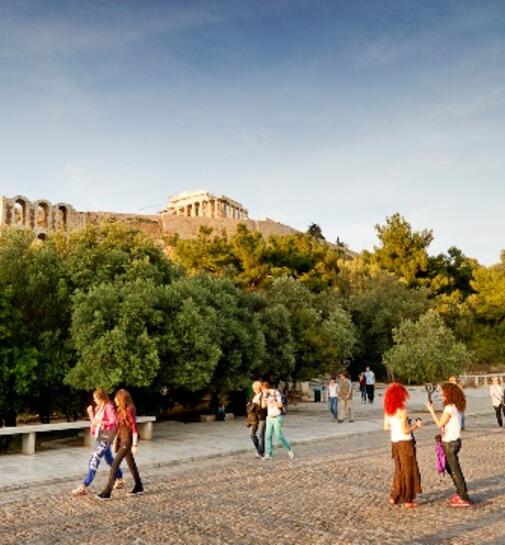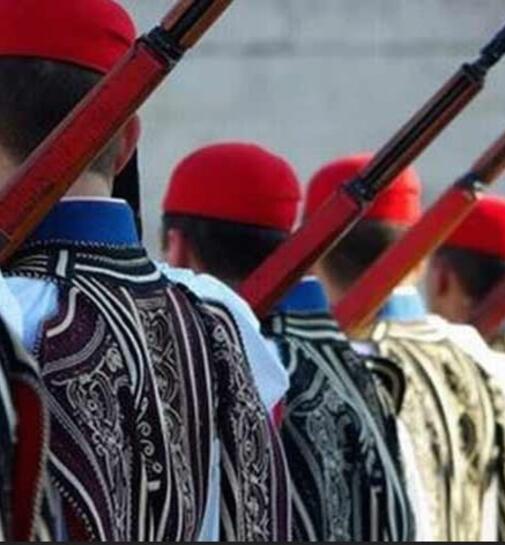On the northern foothills of the Acropolis, at the picturesque district of Plaka, in the intersection of the streets Thrasyvoulou and Aliberti is the church of Panagia Chrysokastriotissa. The origin of the name is not certain and is attributed either to its location under the Acropolis (Kastro) or to its construction from a member of the Katsriotou family. However, it is more possible that after the occupation of Athens by the Franks in 1204, they transferred the icon of Panagia Athiniotissa from the Parthenon, it was converted from an Orthodox to a Catholic church. As a matter of fact, according to one tradition, Kastriotissa or Chrysokastriotissa was how they called the icon itself.
The church dates form the 12th century and is considered that it has been erected over an ancient sanctuary of the goddess Hestia. It belongs to the type of one-aisled vaulted basilica but from its initial form very few elements remain. It has suffered a lot and significant damages during the centuries, both due to the war conflicts during the Greek Revolution in 1821 and during the attempt to restore if the years following the liberation.
According to tradition, in the years before the Revolution, in front of the icon of Panagia always a candle burned, a customs that Athenians maintained even later, honoring the icon that they considered miraculous for sick babies and children. Nowadays, the church celebrates on August 15th, the day of the Dormition of the Virgin.
Church of Virgin Mary Chrysokastriotissa
Panagia Chryssokastriotissa, a holy church marrying yesterday with today, antiquity with modern age, in the arms of Plaka, northern to the holy rock of the Acropolis, at the junction of Thrasyvoulou and Alimberti Streets.
Whereas the present edifice is dated in the 17th century, a church at the site had existed already since the 12th century, built on the ruins of the ancient pagan sanctuary, to the honour of Goddess Hestia. Nothing reminding the original form of the church has been preserved, either due to the military assaults the city of Athens sustained during the revolution of 1821, or owing to the extensive restoration works in later years.
In its present form, the church is a barrel–vaulted single-nave basilica, dedicated to the Dormition of Theotokos. Until the 1970s, the church of the Golden Virgin Mary of the Castle [‘Chryssi Panagia tou Kastrou’] celebrated on the 23rd of August, namely on the Repetition of the Dormition, where it was with great honours that the litany with the holy icon took place.
Today, it celebrates on the very day of the Dormition of Theotokos, on the 15th of August. In fact, according to the tradition, during the era of the Ottoman rule, there always burned an ‘inextinguishable, sleepless lamp’ before the icon of the All-Holy Theotokos, a habit which was preserved by the Athenians, desiring in this way to honour the miraculous icon of Virgin Mary.
Another celebration of the church takes place on the 2nd of December, when also the chapel of the church feasts, which is dedicated to Saint Porfyrios Kafsokalyvitis.
The hypotheses on the name ‘Chrysokastriotissa’, numerous and varied, are associated, principally, either to the owner, reporting a member of the Kastriotis family to have been erected the church or to the location of the church, namely the very position of the church, under the then castle of the Acropolis, may have contributed to the name ‘chrysokastriotissa’. However, the more prevailing version, in all likelihood, is related to the transport of the icon of Virgin Mary Athiniotissa from the Parthenon, in the era of Francocracy, as the very icon was named Kastriotissa or Chrykastriotissa.
In the present edifice of the church, in the interior upper part of the central conch of the Holy Bema, one cannot but stand before the Platytera (‘Wider than the Heavens’), as stated by the inscription on the face of the arch. Virgin Mary, is depicted on a golden meadow, seated on a marble throne, holding Jesus in childhood age. Virgin Mary is wearing a green tunic, which ends in gold cuffs, while her head and her shoulders are covered by a purple long maphorion with golden braids.
Christ is wearing a blueish tunic and a mantle in light brown colour and raises His right hand in blessing gesture, while with the left hand over the left leg it supports a closed manuscript scroll. Right and left to Theotokos Archangels Michail and Gabriel attend kneeling in the clouds, holding scrolls with greetings to the All-Holy Mother of God: Rejoice, for you are the throne of the King; Rejoice, for you hold him Who sustains everything ‘Χαίρε ότι υπάρχεις Βασιλέως καθέδρα, χαίρε, ότι βαστάζεις τον βαστάζοντα πάντα’.
Informations
Additional
Date:
12th century
Season:
Byzantine
Celebrates:
15 August
Holy Metropolis:
Archdiocese of Athens
Under the Supervision of:
Ephorate of Antiquities of Athens
Address:
Thrassyvoulou & Aliberti, Plaka 10556
Access:
Syntagma Metro Station



